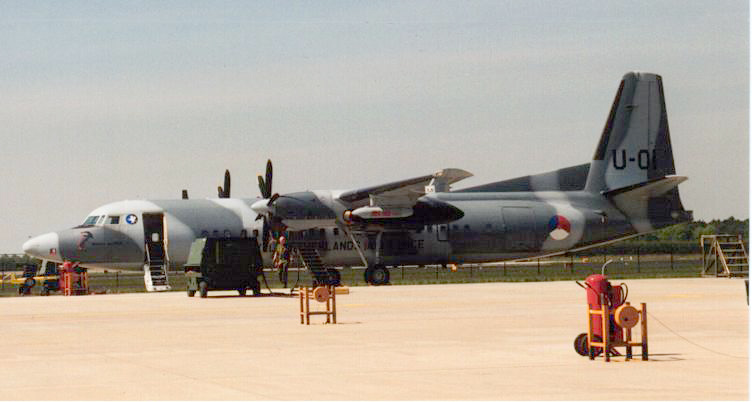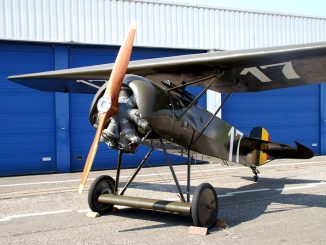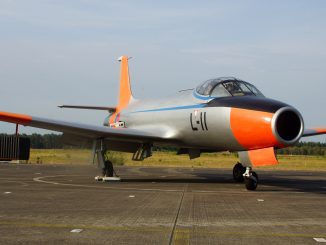
With the last flight of a Fokker 70 in KLM service from London-Heathrow on Saturday 28 October 2017, ended an era of 97 years of Fokkers in KLM service.
That the very last commercial Fokker flight will depart from London is no coincidence. Soon after the first passenger flights took place on 17 May 1920, two Fokkers joined the KLM fleet as the first passenger aircraft to be owned by KLM: these Fokker IIs bore the registration numbers H-NABC and H-NABD. The first operational flight with a Fokker II was on 30 September 1920 to London. The arrival of the Fokker 70 from London on 28 October will complete the circle.

The Fokker F.II was the first of a long series of commercial aircraft from the Fokker Aircraft Company in KLM service. KLM operated two F.IIs between 1920 and 1927, which were then sold to SABENA who used them on their Brussels-Antwerp route.
The F.III was first used by KLM when they reopened their Amsterdam-London service on 14 April 1921 (they did not, at this time operate over winter). Soon, F.IIIs were also flying on routes to Bremen, Brussels, Hamburg, and Paris. They proved to be very reliable aircraft. KLM received 14 F.IIIs from Fokker’s German factory at Schwerin during 1921 and built two more itself from spares in the following year.

KLM received five F.VII and 15 F.VIIas aircraft.
The Fokker F.VII, also known as the Fokker Trimotor, was an airliner produced in the 1920s. The F.VII was designed as a single-engined transport aircraft by Walter Rethel. Five examples of this model were built for the Dutch airline KLM. One of these planes, registered H-NACC, was used in 1924 for the first flight from the Netherlands to the Dutch East Indies.
The F.VIII was Fokker’s first twin-engined airliner, 7 delivered to KLM
The F.IX was a three-engine, high-wing monoplane of conventional configuration, equipped with tailskid undercarriage, 2 in KLM service.
The Fokker F.XII was a three-engined high-winged monoplane airliner. Ten aircraft were ordered by KLM/KNILM for operation on the Amsterdam to Batavia route. Eight aircraft operated from 1931 to 1936.

The Fokker F.XVIII was scaled-up version of the Fokker F.XII intended for long-distance flights. Only five were built, all for KLM, and registered as PH-AIO, ‘AIP, ‘AIQ, ‘AIR and ‘AIS, all of which were named after birds.
The Fokker F.XX one built for the KLM, the F.XX registered PH-AIZ and named Zilvermeeuw.
Fokker F.XXII was a 1930s Dutch four-engined 22-passenger airliner, 3 built for KLM.
Fokker F.XXXVI was a four-engined 32-passenger airliner designed and built by Fokker. It was the largest transport designed and built by Fokker, one aircraft built for KLM.

Fokker F.27 Friendship has the distinction of being the most numerous post-war aircraft to have been manufactured in the Netherlands; the F27 was also one of the most successful European airliners of its era.

Fokker F.28 Fellowship was similar in design to the British Aircraft Corporation BAC One-Eleven and Douglas DC-9, as it had a T-tail and engines mounted at the rear of the fuselage.

Fokker 50 is a turboprop-powered airliner, designed as a refinement of and successor to the highly successful Fokker F27 Friendship.

Fokker 70 the shorter Fokker 100, 14 in KLM service

Fokker 100 was the largest jet airliner built by Fokker before its bankruptcy in 1996. The Fokker 100 is an updated replacement for Fokker’s popular, but superseded, F28 Fellowship jet airliner. KLM Cityhopper had Europe’s largest fleet composition of all Fokker-built aircraft: the Fokker 50, 70 and 100.

KLM Cityhopper was also responsible for the operation of the state owned Fokker 70 aircraft, registration PH-KBX. This Fokker was used by the Dutch Government as well as the Royal Family and has been sold to an Australian-based buyer in 2017.
Fokker Types in KLM Service
| Fokker F.II
Fokker F.III Fokker F.VII Fokker F.VIII Fokker F.IX Fokker F.XII Fokker F.XVIII Fokker F.XX Fokker F.XXII Fokker F.XXXVI Fokker F.27 Friendship Fokker F.28 Fellowship Fokker 50 Fokker 70 Fokker 100 |
1920 – 1924
1921 – 1930 1925 – 1936 1927 – 1940 1930 – 1936 1931 – 1936 1932 – 1946 1933 – 1936 1935 – 1939 1935 – 1939 1966 – 1991 1978 – 1996 1991 – 2010 1995 – 2017 1991 – 2012 |

All pictures courtesy of Zijde Aviation Photo Publishing Rob Vogelaar











































